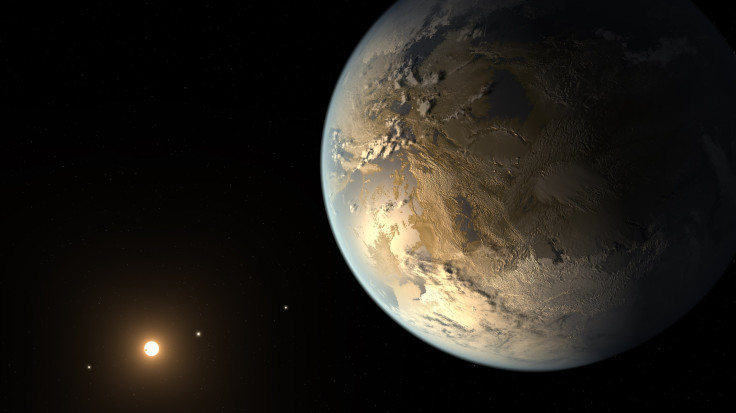Life Beyond Earth? NASA Kepler Mission Catalog Of Potentially Habitable Exoplanets Expanded

New exoplanets, some that could possibly host life, were discovered by NASA’s Kepler Space Telescope, researchers announced Monday at a news conference. The planets complete the Kepler mission catalog that now includes 219 new planets, 10 of which are close to Earth-size and orbiting their stars within the habitable zone. The habitable zone is another way to describe the “Goldilocks,” or perfect, distance from the star where liquid water could hypothetically pool on a rocky surface, meaning it could support life.
This most recent announcement of data is the final announcement of findings that will be added to the catalog from the original Kepler mission. The conference was held at the Ames Research Center in California as part of exoplanet week, which began Saturday.
The original Kepler mission launched in 2009 and was completed in 2012. During that first mission, the craft lost the functionality of one of its reaction wheels. While this loss didn’t hinder the travel of Kepler, a second failed wheel a few months after the mission was completed in 2012 did hinder it. Luckily, researchers were able to work out a new plan for the second mission, K2, with the craft's limited mobility.
Read: NASA Planet Concept Art: How Artists, Researchers Accurately Depict Exoplanets, Stars, Galaxies
With Monday’s addition of planets, the original Kepler mission now has resulted in the identificatoin of 4,043 planet candidates. Of those, 2,335 have been verified as exoplanets. Of the verified planets, there are roughly 50 that are close to Earth in size and orbit their stars in the habitable zone. More than 30 of those have been verified, NASA said.
The closest of those identified planets is just about four light years away, NASA researchers said during Monday’s press conference. That planet is situated around the closest star. Kepler directly measures the size of planets, and their distance from their stars, meaning there is no way to definitely know whether a planet is habitable. It just means it might be.
The Kepler mission only looked at one particular part of the sky, so while it only identified a select number of planets and stars even though there are billions more out there. “This number could have been very, very small, and I for one am ecstatic that we found 50 potentially habitable worlds orbiting nearby stars. That’s great,” said Courtney Dressing, a NASA Sagan Fellow at the California Institute of Technology.
Read: A Planet Hotter Than Most Stars? Jupiter-Like Exoplanet KELT-9b May Be Just That
"What's exciting about today is we have taken our telescope and we have counted up how many planets are similar to the Earth in this part of the sky," Susan Thompson, Kepler research scientist, said at the conference.
The Kepler Space Telescope is still in space, with limited motion working on the K2 mission. While the catalog from the Kepler mission, the first four years Kepler was in space, will not change after Monday, the catalog from K2 may change and grow in the future. As researchers examine new data, and re-examine old data from the K2 portion of the mission, that catalog will likely expand.
You can watch Monday’s briefing online on NASA’s UStream to hear everything the researchers said about the new findings from Kepler.
© Copyright IBTimes 2024. All rights reserved.





















